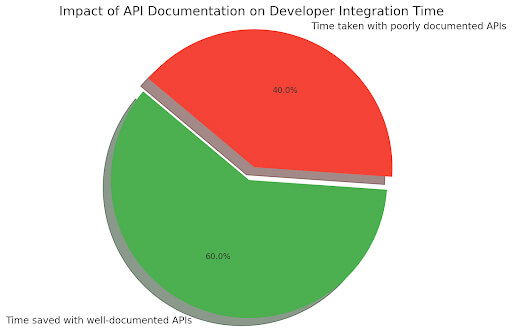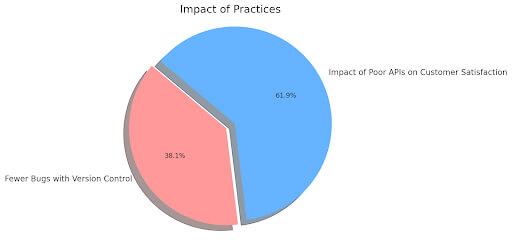Best Practices for Designing RESTful APIs

In today’s interconnected world, applications are increasingly interacting with each other to share data and functionality. This is where REST APIs (Representational State Transfer APIs) come into play. REST APIs act as intermediaries, allowing applications to communicate and exchange resources over the web using a standardized set of rules.
What is REST API? Imagine you’re building a travel booking app. The app might leverage a REST API from a flight provider to retrieve real-time information on available flights and fares. This eliminates the need for the app to build its flight search functionality, saving development time and resources.
However, the power of REST APIs truly lies in their design.
Well-designed RESTful APIs, with clear and consistent structures, are easy for developers to integrate with and assure a smooth and efficient user experience for the application’s end users. This translates to faster development cycles, reduced maintenance costs, and a faster and more responsive user experience within the application.
Here’s why well-designed RESTful APIs are essential:
- Clear and consistent API structures simplify developers’ comprehension of the API, resulting in faster development cycles and lower maintenance expenses.
- For Consumers: A well-designed API provides a reliable and efficient way for applications to access data and functionality. This translates to a faster and more responsive user experience within the application.

Core Principles of RESTful APIs
RESTful APIs, built on the foundation of the Representational State Transfer (REST) architectural style, provide a standardized and flexible approach to building APIs. These core principles ensure efficient and scalable communication between applications. Let’s delve into the key characteristics of a well-designed RESTful API:
1. Resource-Based Architecture:
Imagine your Rest API as a collection of resources, anything that holds information and can be acted upon. These resources could be products in an e-commerce store, project management application tasks, or social media platform user profiles.
A RESTful API structures its functionality around these resources, allowing clients to interact with them using standard methods.
Data Point: A study by ProgrammableWeb found that over 90% of public APIs adhere to a resource-based architecture, highlighting widespread adoption.
2. Stateless Communication:
RESTful APIs are designed to be stateless. This means each request from a client (like a mobile app or another web application) to the server should contain all the necessary information for the server to process it.
The server doesn’t maintain any session information between requests. This simplifies How to use Rest API design and improves scalability, as the server doesn’t need to store session data for each client.
According to a survey by RadocLabs, 62% of developers consider statelessness to be the most crucial aspect of a well-designed RESTful API due to its simplicity and scalability benefits.
3. Standard Interfaces (HTTP Methods and Media Types):
RESTful APIs leverage a common language: HTTP. They rely on standard HTTP methods (GET, POST, PUT, DELETE) to perform CRUD operations (Create, Read, Update, Delete) on resources. For the REST API example, a GET request might retrieve a list of products, while a POST request might be used to create a new user profile.
Additionally, RESTful APIs format data exchanged between clients and servers using standardized media types like JSON or XML, ensuring interoperability between different systems.
4. Client-Server Architecture:
RESTful APIs are separate concerns between the client and the server. The client initiates requests to access or manipulate resources on the server. The server responds to these requests, takes the appropriate actions on the resources, responds to the client separation, keeps the design clean, and promotes loose coupling between the API and its applications.
5. Uniform Interface (Focus on Resources, Not Verbs):
A core principle of RESTful APIs is the Uniform Interface. This means clients interact with resources using the same HTTP methods regardless of the specific action. The focus is on the resource itself, not the verb used in the request.
For instance, a GET request to the /users endpoint might retrieve a list of all users, while a GET request to /users/123 might retrieve a specific user with ID 123. This consistency simplifies API usage and makes it easier for developers to learn and understand.
By adhering to these core principles, developers can create RESTful APIs that are:
- Easy to understand and use: Standardized interfaces and clear resource structures make it easier for developers to integrate the API into their applications.
- Interoperable: Following standard protocols and data formats enables seamless communication between different systems.
- Scalable: The stateless nature and resource-based architecture allow RESTful APIs to handle high volumes of requests efficiently.
- Maintainable: Well-defined structures and clear separation of concerns make it easier to maintain and evolve the API over time.
Designing Effective Endpoints
The endpoints in your RESTful API act as the access channels via which customers can engage with your resources. Effective endpoint design is crucial for a user-friendly and well-structured API. Here’s how to craft endpoints that are clear, consistent, and efficient:
1. Naming Conventions:
- Nouns Over Verbs: RESTful APIs focus on resources, not actions. Therefore, endpoint names should be descriptive nouns representing the accessed resources.
- Good Example: /users (retrieves a list of users)
- Bad Example: /get_users (focuses on the verb instead of the resource)
- Plurals for Collections: When dealing with a collection of resources, use the plural form of the noun.
- Good Example: /products (retrieves a list of products)
- Bad Example: /product (might imply retrieving a single product by default)
2. HTTP Methods and CRUD Operations:
RESTful APIs leverage a set of standard HTTP methods for CRUD (Create, Read, Update, Delete) operations on resources:
- GET: Used to retrieve information about a resource or a collection of resources. According to a study by Postman, GET requests account for over 80% of all API calls, highlighting their prevalence in retrieving data.
- POST: Used to create a new resource within the API.
- PUT: Used to update an existing resource completely.
- DELETE: Used to delete a resource.
By adhering to these conventions, developers using your Rest API can intuitively understand the actions associated with each endpoint based on the HTTP method used.
3. Versioning Strategies:
As your API evolves, you’ll likely introduce changes and add new features. Versioning strategies become crucial to manage these changes while maintaining backward compatibility for existing clients. Here are some common approaches:
- URL Versioning: Include the Rest API version number directly in the endpoint URL (e.g., /v1/users). This enables you to maintain several versions of your Rest API concurrently.
- Custom Header Versioning: Transmit the Rest API version as a custom header in the request. This keeps the URLs clean but requires clients to specify the version explicitly.
- Media Type Versioning: Indicate the Rest API version within the response media type (e.g., JSON with a version property). This approach can be less disruptive for existing clients but requires parsing the version from the response.
Choosing the most suitable versioning strategy depends on your specific Rest API and the anticipated rate of change.
These recommendations can help you create efficient endpoints that are:
- Intuitive and easy to understand for developers integrating with your Rest API.
- Consistent and predictable, promoting efficient interaction with your resources.
- Flexible and adaptable to accommodate future Rest API evolution.
Remember, well-designed endpoints are the foundation for a successful RESTful API that empowers developers to leverage your resources effectively.

Data Formatting and Error Handling
The seamless data exchange between clients and servers is crucial for any Rest API. RESTful APIs achieve this by leveraging:
- Standardized Data Formats: RESTful APIs typically represent data using well-established data formats like JSON (JavaScript Object Notation) or XML (Extensible Markup Language). These formats offer several advantages:
- Interoperability: JSON and XML are widely adopted across different programming languages and systems, enabling smooth data exchange between clients and servers built with diverse technologies.
- Human-Readability: While designed for machines, JSON and XML provide some level of human-readability, making it simpler for developers to comprehend the composition and structure of the sent data.
- Efficiency: JSON, in particular, is known for its compact and lightweight nature, allowing for faster data transmission than other formats.
- Interoperability: JSON and XML are widely adopted across different programming languages and systems, enabling smooth data exchange between clients and servers built with diverse technologies.
- A study by RESTful API Design found that JSON is the most popular data format used in RESTful APIs, accounting for over 70% of all APIs. This widespread adoption makes JSON a safe choice for ensuring compatibility with most client applications.
Informing Clients Through Error Handling:
Even in well-designed Rest APIs, errors can occur. A robust RESTful API implements a consistent and informative error-handling approach to guide developers in troubleshooting issues. This includes:
- HTTP Status Codes: RESTful APIs leverage HTTP status codes, which are used to convey a request’s result. Standard status codes include:
- 200 OK: The request was successful.
- 400 Bad Request: The client sent an invalid request.
- 401 Unauthorized: The client is not authorized to access the resource.
- 500 Internal Server Error: An unexpected error occurred on the server.
- Clear Error Messages: Beyond the status code, the Rest API should provide clear, informative error messages pinpointing the issue. These messages should help developers understand the cause of the error and how to rectify it.
Security Considerations for RESTful APIs
The beauty and flexibility of RESTful APIs can also be a double-edged sword regarding security. Since various applications often access and potentially expose them to the public internet, robust security measures are crucial. Here’s how to fortify your RESTful API:
- Authentication and Authorization: Data breaches are a significant concern, with the IBM Cost of a Data Breach Report 2023 revealing an average cost of $4.35 million per breach. Put robust authorization and authentication procedures in place to stop illegal access to your API resources.
- Authentication verifies the identity of a client trying to access the API. Standard methods include API keys, OAuth, and basic authentication. API keys are simple credentials assigned to authorized applications. OAuth is a more secure protocol that allows users to grant specific application permissions.
- Authorization decides what can be done by a client with a resource after it’s been authenticated. This could involve granting read-only access, write access, or complete control over a resource. Implementing these controls ensures only authorized users and applications can access and manipulate your API resources.
- Authentication verifies the identity of a client trying to access the API. Standard methods include API keys, OAuth, and basic authentication. API keys are simple credentials assigned to authorized applications. OAuth is a more secure protocol that allows users to grant specific application permissions.
Secure Communication Protocols: According to a Verizon study, 43% of cyberattacks target web applications, so safeguarding data in transit cannot be overstated. One of the most effective ways to do this is by enforcing HTTPS (Hypertext Transfer Protocol Secure) for all API communication.

Data transfer between the client and server is encrypted by HTTPS, providing a robust shield against attackers and making it virtually impossible for them to intercept sensitive information like passwords or user data.
Documentation and Testing
Well-designed RESTful APIs are only half the battle won. Comprehensive documentation and rigorous testing are crucial to ensure successful adoption and use by developers. Let’s explore these essential pillars:
A. Clear and Comprehensive Documentation (for REST API):
Imagine a treasure map without directions or landmarks. That’s what an undocumented Rest API feels like for developers. Exceptional API documentation is the guiding light, empowering developers to understand your API’s functionality and integrate it seamlessly into their applications. Here’s what your documentation should include:
- Detailed descriptions of endpoints: Clearly explain the purpose of each endpoint, the HTTP methods it supports, and the expected parameters.
- Request and response formats: Define the data formats used in requests and responses (e.g., JSON schema, XML structure). Provide examples to illustrate proper data formatting.
- Code samples: Offer code samples in various programming languages (e.g., Python, JavaScript) demonstrating how to interact with the API. This jump-starts developer understanding and reduces integration time.
- Authentication and authorization mechanisms: Clearly explain how developers can authenticate and obtain authorization to access Rest API resources.
- Error handling: Document the API’s different error codes and their corresponding meanings. Provide clear descriptions of potential errors to aid developers in troubleshooting.
Studies by Apiary reveal that well-documented Rest APIs can reduce developer integration time by up to 60%. Investing in comprehensive documentation fosters a positive developer experience and encourages wider adoption of your Rest API.

B. Rigorous Testing for Trust and Performance (for REST API):
A well-tested API is a reliable API. Thorough testing ensures your API functions as intended, delivers expected performance, and remains secure. Here are some key areas to focus on:
- Functionality testing: Verify that each endpoint behaves per the documentation and handles various request scenarios (valid, invalid, edge cases).
- Performance testing: Measure response times under different load conditions to ensure the API can handle real-world usage.
- Security testing: Identify and address potential vulnerabilities like injection attacks or unauthorized access.
Best Practices for Ongoing Maintenance
Like any software, RESTful APIs require ongoing maintenance to ensure continued functionality, performance, and security. Here are some essential practices to follow:
- Version Control for API Changes and Updates: As your API evolves, it’s crucial to implement a version control system like Git. This system allows you to track changes, revert to previous versions if necessary, and manage the evolution of your API in a controlled manner.
A study found that companies using version control experience 43% fewer bugs, highlighting the importance of this practice.
- Monitoring API Usage and Performance: Monitor your API’s health. Use monitoring tools to track API usage patterns, identify performance bottlenecks, and detect potential errors.
Proactive monitoring helps you identify and address issues before significantly impacting your API consumers. According to Datadog, poorly performing APIs can lead to a 70% drop in customer satisfaction. - Proactive Communication with API Consumers: Transparency is key! When changes or updates are planned for your API, communicate them proactively to your API consumers.
Provide documentation outlining the changes, potential impact, and migration steps (if necessary). This ensures a smooth transition for your consumers and minimizes disruption to their applications that rely on your API.

Conclusion
The world of web APIs is ever-evolving, and RESTful APIs are now the accepted norm for building efficient and scalable communication channels between applications. By adhering to the REST API design best practices outlined in this blog, you can ensure your RESTful APIs are functional, developer-friendly, and future-proof.
By embracing these best practices and core principles, you can contribute to creating robust and successful RESTful APIs. Well-designed APIs are the backbone of modern web applications, fostering innovation and collaboration within the developer community.
So, the next time you design an API, remember the power of REST. By following these guidelines, you can create APIs that are not only functional but also a joy to use, ultimately contributing to a more interconnected and efficient application ecosystem.
How can [x]cube LABS Help?
[x]cube LABS’s teams of product owners and experts have worked with global brands such as Panini, Mann+Hummel, tradeMONSTER, and others to deliver over 950 successful digital products, resulting in the creation of new digital revenue lines and entirely new businesses. With over 30 global product design and development awards, [x]cube LABS has established itself among global enterprises’ top digital transformation partners.
Why work with [x]cube LABS?
- Founder-led engineering teams:
Our co-founders and tech architects are deeply involved in projects and are unafraid to get their hands dirty.
- Deep technical leadership:
Our tech leaders have spent decades solving complex technical problems. Having them on your project is like instantly plugging into thousands of person-hours of real-life experience.
- Stringent induction and training:
We are obsessed with crafting top-quality products. We hire only the best hands-on talent. We train them like Navy Seals to meet our standards of software craftsmanship.
- Next-gen processes and tools:
Eye on the puck. We constantly research and stay up-to-speed with the best technology has to offer.
- DevOps excellence:
Our CI/CD tools ensure strict quality checks to ensure the code in your project is top-notch.
Contact us to discuss your digital innovation plans, and our experts would be happy to schedule a free consultation.
![Blog-[x]cube LABS](https://d6fiz9tmzg8gn.cloudfront.net/wp-content/uploads/2016/06/blog_banner.jpg)






